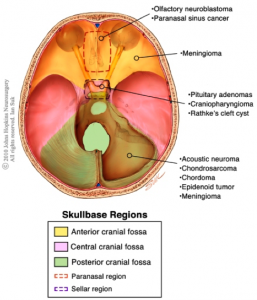[fullwidth background_color=”#ebebeb” background_image=”” background_parallax=”none” enable_mobile=”no” parallax_speed=”0.3″ background_repeat=”no-repeat” background_position=”left top” video_url=”” video_aspect_ratio=”16:9″ video_webm=”” video_mp4=”” video_ogv=”” video_preview_image=”” overlay_color=”” overlay_opacity=”0.5″ video_mute=”yes” video_loop=”yes” fade=”no” border_size=”0px” border_color=”” border_style=”solid” padding_top=”0″ padding_bottom=”0″ padding_left=”” padding_right=”” hundred_percent=”yes” equal_height_columns=”no” hide_on_mobile=”no” menu_anchor=”” class=”” id=””][imageframe lightbox=”no” lightbox_image=”” style_type=”none” hover_type=”none” bordercolor=”” bordersize=”0px” borderradius=”0″ stylecolor=”” align=”center” link=”” linktarget=”_self” animation_type=”0″ animation_direction=”down” animation_speed=”0.1″ hide_on_mobile=”no” class=”” id=””]  [/imageframe][/fullwidth][fullwidth background_color=”#ffffff” background_image=”” background_parallax=”none” enable_mobile=”no” parallax_speed=”0.3″ background_repeat=”no-repeat” background_position=”left top” video_url=”” video_aspect_ratio=”16:9″ video_webm=”” video_mp4=”” video_ogv=”” video_preview_image=”” overlay_color=”” overlay_opacity=”0.5″ video_mute=”yes” video_loop=”yes” fade=”no” border_size=”0px” border_color=”” border_style=”solid” padding_top=”40″ padding_bottom=”40″ padding_left=”” padding_right=”” hundred_percent=”no” equal_height_columns=”no” hide_on_mobile=”no” menu_anchor=”” class=”” id=””][two_third last=”no” spacing=”yes” center_content=”no” hide_on_mobile=”no” background_color=”” background_image=”” background_repeat=”no-repeat” background_position=”left top” border_position=”all” border_size=”0px” border_color=”” border_style=”” padding=”” margin_top=”” margin_bottom=”” animation_type=”” animation_direction=”” animation_speed=”0.1″ class=”” id=””][fusion_text]
[/imageframe][/fullwidth][fullwidth background_color=”#ffffff” background_image=”” background_parallax=”none” enable_mobile=”no” parallax_speed=”0.3″ background_repeat=”no-repeat” background_position=”left top” video_url=”” video_aspect_ratio=”16:9″ video_webm=”” video_mp4=”” video_ogv=”” video_preview_image=”” overlay_color=”” overlay_opacity=”0.5″ video_mute=”yes” video_loop=”yes” fade=”no” border_size=”0px” border_color=”” border_style=”solid” padding_top=”40″ padding_bottom=”40″ padding_left=”” padding_right=”” hundred_percent=”no” equal_height_columns=”no” hide_on_mobile=”no” menu_anchor=”” class=”” id=””][two_third last=”no” spacing=”yes” center_content=”no” hide_on_mobile=”no” background_color=”” background_image=”” background_repeat=”no-repeat” background_position=”left top” border_position=”all” border_size=”0px” border_color=”” border_style=”” padding=”” margin_top=”” margin_bottom=”” animation_type=”” animation_direction=”” animation_speed=”0.1″ class=”” id=””][fusion_text]
Skull Base Tumours
Skull base tumours are any tumours that involve the base of the skull (the part underneath the brain). The actual tumour types can be from a range of cell origins, and can behave very differently to each other. These tumours are considered in a common group, not because of the tumour type, but due to the location and the challenges they pose for surgical treatment.
The skull base consists of the bottom of the brain, behind the eyes, above the nose and that part immediately inside the ears. Many different types of tumours can grow inside the bony cavity and cause pressure or distortion of the adjacent brain. Tumours can also grow into the bone of the skull or grow from outside to inwards into the cranial cavity.
 The base of the brain poses a challenge as many important nerves, called the cranial nerves (that coordinate the function of the face, eyes, tongue and jaw), course through this area. In addition, the blood supply to the brain from the carotid and vertebral arteries and the major venous structures all line the base of the skull. Therefore direct surgical access can often be challenging and requires particular expertise.
The base of the brain poses a challenge as many important nerves, called the cranial nerves (that coordinate the function of the face, eyes, tongue and jaw), course through this area. In addition, the blood supply to the brain from the carotid and vertebral arteries and the major venous structures all line the base of the skull. Therefore direct surgical access can often be challenging and requires particular expertise.
Some of the common tumours that affect the base of the skull include meningioma, pituitary gland tumours, cranial nerve tumours such as acoustic neuroma, bone tumours such as chordoma and chondrosarcoma and other tumours such as craniopharyngioma, epidermoid and dermoid.
Most of the skull base tumours require surgical intervention with or without adjuvant therapies. Surgery may involve biopsy of the tumour, debulking (partial resection) or total resection of the tumour. Surgeons at Neurosurgery Tasmania have extensive experience in managing skull base tumours using microsurgical techniques with state-of-the-art technologies. Specific surgeries, e.g. pituitary tumour surgery, may involve a team of surgeons operating together.[/fusion_text][/two_third][one_third last=”yes” spacing=”yes” center_content=”no” hide_on_mobile=”no” background_color=”#f7f7f7″ background_image=”” background_repeat=”no-repeat” background_position=”left top” border_position=”all” border_size=”0px” border_color=”” border_style=”solid” padding=”20px” margin_top=”” margin_bottom=”” animation_type=”0″ animation_direction=”down” animation_speed=”0.1″ class=”” id=””][fusion_widget_area name=”avada-custom-sidebar-cerebraltumours” background_color=”#f7f7f7″ padding=”10px” class=”” id=””][/fusion_widget_area][/one_third][/fullwidth]



